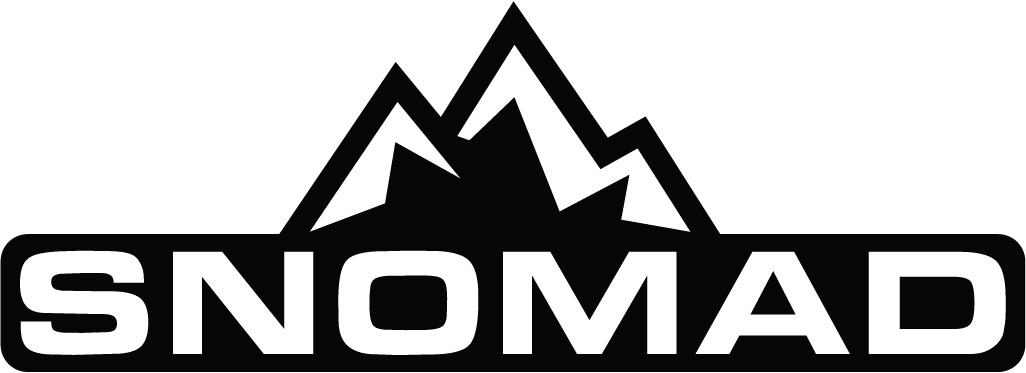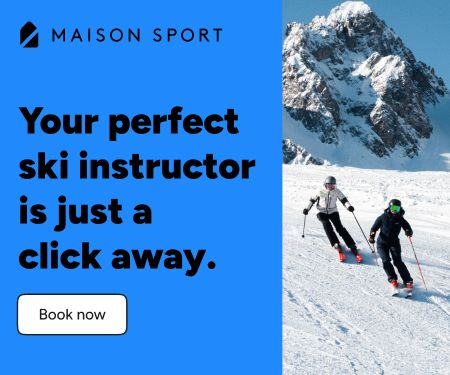Ranked
37th
of 236 ski resorts
Overall Rating
4.51
From 203 Reviews
141
Total Runs
1304
Bottom Elevation
2811
Top Elevation
301
Skiable Terrain
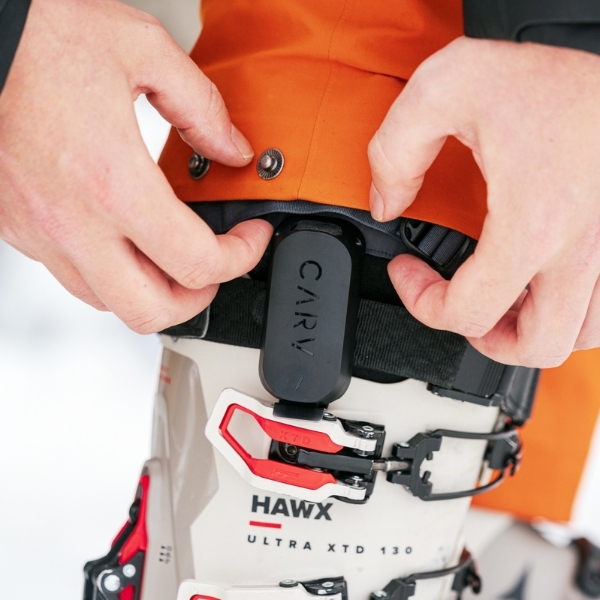
Sponsored Partner
Unlock Challenging Slopes in St. Anton am Arlberg
Level up your ski technique, master more of the mountain and have more fun on the snow with Carv! Carv 2 clips to your boot, helping you to improve on every terrain type. Get real-time audio coaching as you ski, as boot sensors detect your movement.
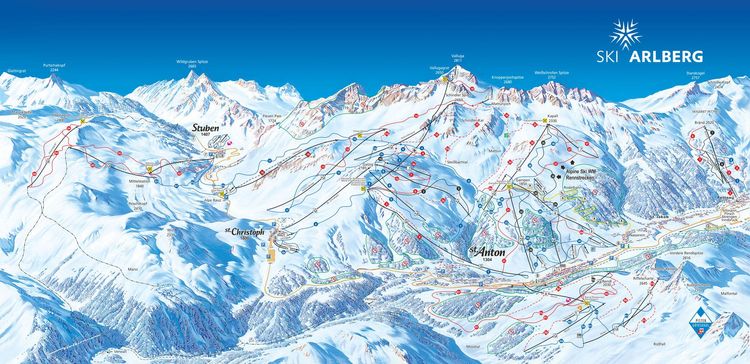
St. Anton Overview
Known for its schnitzels, steins and legendary freeride ski terrain, St Anton am Arlberg is a bucket-list winter sports holiday for many. There’s a consistently deep snowpack, which draws in the powderhounds year after year, and a world-renowned après scene that is both wild and wonderful. Sitting 1304m up in the Tyrolean Alps, it has been connected to the colossal ski area of Arlberg since the 2016/17 installation of four connecting gondolas, which takes riders over to neighbouring Lech and Zürs.
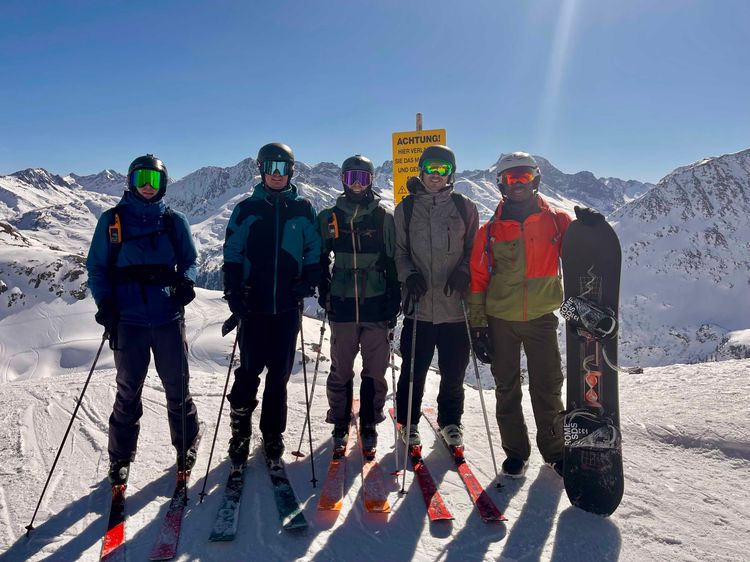
Referred to as the ‘cradle of Alpine skiing,’ the quaint Tyrolean village of St Anton was just another farming stronghold until 1880, when a Norwegian engineer was based here to consult on the construction of the Arlberg tunnel. It was the curious way he travelled to work that the villagers marvelled over, using two wooden planks strapped to his feet. However, it wasn’t until 1901 that the Ski Club Arlberg was founded and people were really convinced. Then, the son of a local cheesemaker went on to become the ‘Father of modern Day Skiing,’ Hannes Schneider, born in Stuben am Arlberg, quickly progressed from an enthusiastic 13 year old watching someone ski for the first time, to the pioneer of the Arlberg technique. Innovative from the get-go, St Anton soon introduced a ski lift in 1937, The Galzigbahn, which still stands today (albeit slightly more developed) in all its impressive architectural glory.
Much of the resort also featured as the filming location for the 2011 film Chalet Girl, as well as a Jamiroquai music video and a handful of vintage ski films - today the main draws are the advanced-level skiing and lively après.
Our Snomad community rates St. Anton exceptionally highly, with an overall rating of 4.51/5. The resort scores particularly well for après-ski (4.78/5), expert terrain (4.62/5), and lift efficiency (4.67/5).
"Only great things to say about St. Anton am Arlberg. Ski school is world class. With 85 lifts and more than 300km of slopes, great apres ski, friendly locals and delicious food, it is a bucket list ski trip. Lift fees are surprisingly affordable compared to the US/Canada."
"Amazing resort with a wide expanse of runs for all levels of rider, nice freestyle park but was lacking some intermediate features. All slopes were nicely groomed and the off piste was nice at the top but was lacking snow near the bottom when I went."
"Always a good time in St Anton. There are some great expeditions along the valleys to Lech, Warth etc. but also lots to explore locally. Big fan of Rendl. I didn't understand the appeal of apres until I came here - it's another level!"

The skiing in St. Anton
The fifth largest ski area in the world, Alberg caters to all riders. The Arlberg Card (which covers St. Anton, Lech, Zürs, Stuben and St. Christoph) grants access to 340km of ski runs between the altitudes of 1300m and 2800m. In short, riders of all abilities will have their needs met here.
In St Anton itself there’s 127km of pistes, reaching an altitude of 2,811m. There’s skiing on both sides of the valley, which makes for great views and plenty of piste to explore. The grading is higher here, so what is marked as a black in France is actually more like a red here, which is why it’s not strictly recommended for beginners. That being said though, the runs closer to the village are more mellow, with learn-to-ski and family-orientated facilities based lower down in Nasserein. Plenty of members in the Snomad community have either learned here or visited as a beginner, so don’t let the general consensus put you off.
For experts, the aptly named Fang piste is the steepest, situated below Gampen. However, the off-piste riding is the real draw here, with marked but unpatrolled routes all over the map. If you’re looking to really get off the beaten track, there’s some famous lines down from the top of the Valluga gondola station, but be sure to get a guide if you’re hitting those.

If you want to rack up some serious ski miles, you can complete the Run of Fame, an 85km long ski circuit that takes you through the entire Arlberg region. You can begin from almost anywhere, but there are two official routes: South, from St. Anton/Rendl in the direction of Warth, or North, from Warth to St Anton.
Much of the resort is south facing, which means mornings can be icy and afternoons really chopped up or bumpy depending on the time in the season. Ultimately though, St Anton has a great reputation for fresh powder snow and also has a sophisticated snow-making system, so the conditions shouldn’t be too much of an issue at any point throughout the season.
The terrain earns high marks from our users for groomed runs (4.51/5) and off-piste opportunities (4.43/5). While the resort caters to all abilities, it truly shines for intermediate (4.41/5), advanced (4.54/5), and expert skiers (4.62/5).
For powder enthusiasts, St. Anton delivers with a powder rating of 4.20/5. Lizzy, an expert snowboarder, shared that "I had my best powder rides here. They get a lot of snow in St. Anton and the possibilities are endless as it is a big resort."
"Huge snowpark, lots of off piste terrain. I had my best powder rides here. They get a lot of snow in st. Anton and the possibilities are endless as it is a big resort."
"St Anton is a good resort if you want to push yourself. The skiing is demanding compared to a lot of resorts. The skiing school is very good well above average . It has some great off piste lift served with some great ski routes"
"Absolute favourite resort. There's something for everyone. Great restaurants on the mountain and in town. Apres cannot be matched. Huge ski area - well linked by efficient lifts."
Ranked Highly For
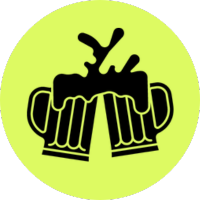
Après-Ski
1st of 230 worldwide

Snowboarders
11th of 98 worldwide

Experts
13th of 105 worldwide

Eating Out
22nd of 241 worldwide

Eating out in St. Anton
The great part about St Anton being a world-renowned resort is that there’s plenty of choice when it comes to eating out, both on the mountain and in the town itself. There are plenty of huts on the slopes equipped with sun terraces and a choice of either self-service or a la carte arrangements, meaning you can stop during the day and refuel easily.
If you’ve booked a hotel, chances are that you’ll be on a half-board basis with your evening meal included, but if you want to sample some local cuisine, you’ll be spoilt for choice. Bodega Bar is known for fantastic Spanish tapas, Q - Dinner Club offers Asian fusion cuisine and Galzig Bistrobar specialises in Italian dishes and great steaks. The streets are literally lined with international offerings, meaning everyone in your group (even the Sushi fan) will be satiated.
"Excellent infrastructure, excellent restaurants and bars."
"St. Anton is an amazing authentic Austrian ski resort. Nice restaurants on the slopes and in town. Amazing after ski and soooo funny, you need visit Moosevirt,"
"Lovely town with a nice mix of restaurants, shops and bars."

Maison Sport
Preferred Partner
Book Ski Lessons in St. Anton am Arlberg
Choose from top-rated expert ski instructors in St. Anton am Arlberg and
elevate your experience on the slopes! Private, group and off-piste
lessons available.

Après-Ski in St. Anton
Not only is St. Anton visually picture-perfect with a huge network of marked ski routes, it’s a mecca for après ski and is home to two of the world’s most famous post-ski bars, Mooserwirt and Krazy Kanguruh. However, your first stop after being on the mountain all day will probably be the sun-soaked terrace of Heustadl. You can also grab a decent bite to eat here (because we all know you’re not making it back for dinner.)
The two most famous après bars are the enjoyably named Mooserwirt and Krazy Kanguruh. Both of these venues are NOT the place to go if you’re looking for a relaxed drink, as they are often crowded and known for their party atmosphere. At Mooserwirt, the party stops at around 8pm, when you can make the call as to whether you’re in a fit enough state to ride the short distance back down to town - fear not though, there’s a paved pathway that leads down from the back.
If you’d rather get comfortable and cosy, and be able to sip on your drink without fear of it being sent flying by a rogue arm, Eisbar Basecamp has an exclusive feel that will satisfy the goldilocks of the group - it’s not too busy, the music isn’t too loud and the clientele aren’t too rowdy.
"The Apres is second to none. Great choice of different slopes. Just watch out for the long run back into town."
"Lots of apres activities - ski by the Chalet Girl Chalet or hit Bar Cuba for a love juice. Goulash at base camp and party at Taps. Great ski, great après, great resort."
"I love St. Anton, it has something for everyone but in particular for people who love après ski. It has a great vibe and ski area. "

St. Anton For Families
St Anton is equipped with a vast menu of things to do for both families and non-skiers. Indoor activities for families include bowling, trampolining, climbing, escape rooms and tennis, while outdoor activity options include tobogganing, ice skating, paragliding, curling, sleigh riding and getting out and about with the huskies.
Non-skiers can also enjoy all of these of course, along with yoga, swimming and spa days at the Arlberg WellCom, where saunas and steam rooms, a gym, a swimming pool and a menu of treatments are available.
"The green and blue runs are very family friendly, and the off-pistes are no joke, haha.There are bars to drink and grab a bite all over the mountain. You can grab a beer at the panorama bar overlooking the ski park. The apre ski culture is very fun and lively, it was truly a memorable time at St. Anton!"
"St. Anton and the linked region are a paradise for advanced skiers, but still fine for those learning, especially with such great ski schools"
"Having skied and lived in St Anton for 2 years, the village has a wealth of facilities for families including an amazing leisure centre."
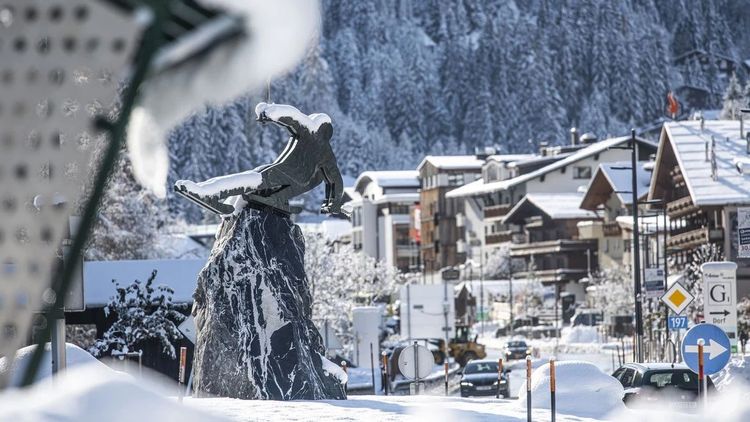
Accommodation in St. Anton
The resort of St Anton encompasses the villages of St Jakob, St Christoph and Stuben-am-Arlberg, so accommodation is spread out throughout them all in the form of hotels, guesthouses, B&Bs and self-catering - fear not though, it’s all connected by a short bus ride.
If you want to be as central as possible, opt to stay in St Anton itself, near to the Galzig gondola. Be warned though, this is also the epicentre of après and partying, so probably not the best choice for families. The quieter end at Nasserein is better if you’re looking for a relaxing environment. Another quieter option is Stuben, which has retained its village feel.
For high-end, exclusive ski-in and ski-out vibes, St Christoph is a popular choice and is definitely more sedate than St Anton. While everywhere here has a reputation for being expensive, (it is Austria, after all) you can easily find something to suit your needs and budget.
"Awesome skiing and great accommodation options. Lots to do in the evening, including for non-skiers as well. Food was great too!"
"Great range of accommodation from family run B&Bs to luxury hotels with spa and pools. Pistes incredible and with access to whole of Ski Arlberg, you'll never be bored"
"Accommodation can be expensive but can find cheaper places a short bus ride out of the town in places like Flirche. Overall fantastic resort."
St. Anton am Arlberg Pros: Why the Snomad Community Loves It
Based on our user reviews, these are the top 5 favourite aspects of St. Anton am Arlberg:
Based on our Snomad user reviews, here are the top 5 favourite things about St. Anton:
-
The world-class après-ski scene - Many users specifically highlight Mooserwirt and Krazy Kangaruh as legendary spots. Shane, an expert skier, calls it "the best APRÈS in the alps bar none" while numerous reviewers mention it's what makes St. Anton truly special.
-
Extensive off-piste terrain - Advanced and expert skiers/snowboarders consistently praise the accessible powder opportunities. Lizzy, an expert snowboarder, shares: "I had my best powder rides here. They get a lot of snow in St. Anton and the possibilities are endless."
-
The vast interconnected ski area - The ability to ski between St. Anton, Lech, Zürs, and other villages in the Arlberg region is frequently mentioned. As Hans, an advanced skier, notes: "Great place to ski, slopes are well prepared, lot of options for beginners and experts."
-
Efficient lift system - Several users praise how well the resort handles the volume of skiers. Nicholas, an intermediate skier, calls it "great lift system and a large ski area."
-
Mountain restaurants and food quality - The on-mountain dining receives considerable praise. Nicholas, an advanced skier, mentions "The food in the mountain restaurants is good with alpine charm," while others highlight specific restaurants like Hospiz Alm for memorable lunches.
St. Anton am Arlberg Cons: What Snomad Skiers Say Could Be Better
Based on our user reviews, these are the top complaints about St. Anton am Arlberg:
Based on our Snomad community reviews, here are the top five issues users mention about St. Anton:
-
Overcrowding and bottlenecks - Multiple reviewers highlight the busy slopes, especially during peak holiday periods. One user mentions experiencing "waits of 20-30 mins in many of the first few lifts" while another points out that "certain runs that everyone has to use to get home are very busy and full of moguls from lunchtime."
-
Not beginner-friendly - This is a consistent theme across many reviews. As Peter, an advanced skier, states: "Probably not a resort to learn if you have not skied before." Neil adds that it's "not a resort for beginners" with "limited wide cruising pistes" that are often "challenging for intermediates."
-
Difficult navigation - Some users find the ski area challenging to navigate compared to other resorts. One reviewer mentions they "didn't find it as easy to navigate as some of the other big ski areas such as Tignes/Val d'Isere."
-
Increasing prices - Mick, an advanced skier, notes that "prices have risen considerably in the last few years," while Hamish believes that the booming après scene "has ticked the price of accommodation up."
-
Weather dependency - Several users mention that poor weather conditions can significantly impact the experience. A few reviewers encountered warm temperatures that affected snow quality, with one mentioning "8-10 degrees celsius up the mountain" preventing them from experiencing the famous off-piste opportunities.
Recent Reviews
expert skier ⛷️ United Kingdom
James
Dec, 29 2025
Big resort with plenty of runs for all abilities.
The apres bars were far too busy and everyone had to pile into a few different spots.
The apres bars were far too busy and everyone had to pile into a few different spots.
advanced skier ⛷️ United Kingdom
Gerwyn
Dec, 28 2025
Amazing ski resort one the best I’ve visited over the past 30 years. Apres is hands down the best I’ve experienced and the skiing is amazing if you head over to lech and Zurs.
expert skier ⛷️ United States
Preston
Dec, 27 2025
Went here on a boys trip and had the best of times. Tons of interconnected terrain and AMAZING apre ski. Relatively affordable compared to Switzerland or France. They call it St. Manton for a reason, there are many more guys than girls.
St. Anton am Arlberg Resort Stats
Ski Terrain
61Beginner Runs
56Intermediate Runs
24Advanced Runs
9 kmLongest Run
301 kmSkiable Terrain
32 kmsSnow making
Elevation
2811 mTop
1304 mBottom
1507 mVertical Drop
Lifts
15Gondolas / Cable Cars
45Chairlifts
28Surface Lifts
Lift Pass Costs
€1114Season pass
€4016 days
€751 day
Weather
372 cmAverage annual snowfall
St. Anton am Arlberg Travel Information
Airports
95min drive100KMsInnsbruck Airport (INN)
135min drive120KMsFriedrichshafen Airport (FDH)
Train Stations
5min drive1KMsSt. Anton am Arlberg
FAQs Skiers' Most Asked Questions
St. Anton am Arlberg FAQs: Skiers' Most Asked Questions
Is St. Anton am Arlberg snow-sure?
St. Anton is generally snow-sure, especially at higher elevations (topping out at 2811m). However, its relatively low base altitude (1304m) means lower slopes can experience variable conditions. Some Snomad users mention that warm weather can affect conditions - one advanced skier visited during 8-10°C temperatures which impacted the famous off-piste. The resort has excellent snowmaking capabilities to supplement natural coverage when needed, particularly on the main runs back to the village.
What mountain range is St. Anton am Arlberg part of?
St. Anton am Arlberg is part of the Arlberg mountain range in the Austrian Alps. This iconic range straddles the border between the Austrian states of Tyrol and Vorarlberg, forming part of the Northern Limestone Alps. The resort is famous for its challenging terrain and lively après-ski, with an overall rating of 4.51/5 from our Snomad community.
When does the ski season start and end in St. Anton am Arlberg?
The ski season in St. Anton am Arlberg typically runs from early December to late April. Our users report that the most reliable snow conditions are from mid-December through March. As Benjamin, an expert skier, notes: "St. Anton offers challenging skiing for the ambitious but also enjoyable, easy-going options." The resort's overall rating of 4.51/5 reflects its impressive season length and snow reliability.
Is St. Anton am Arlberg good for beginners?
St. Anton isn't ideal for beginners. While it offers 61 beginner runs, many users find them challenging. Peter notes it's "probably not a resort to learn if you have not skied before," and David mentions "plenty of steep runs" beyond beginner level. The resort scores just 4.00/5 for beginners, with many runs becoming mogul-filled and busy. Robert points out that "moving on the easy slopes can be challenging for absolute beginners."
Is St. Anton am Arlberg good for intermediate skiers?
St. Anton is fantastic for intermediates, scoring 4.41/5 for intermediate skiing. The resort offers 56 intermediate runs with excellent lift connections, though some users note it can be challenging in spots. Nicholas, an intermediate skier, highlights the "fast transfers, great town with plenty of options for eating out, and a large ski area." The resort pushes you to improve - Jess mentions "initially found the blues and reds difficult but it pushed me to become a better skier."
Is St. Anton am Arlberg good for advanced skiers?
St. Anton am Arlberg is exceptional for advanced skiers, earning 4.54/5 for advanced skiers and 4.62/5 for experts. Our reviewers mention that the terrain offers challenging pistes, extensive off-piste opportunities, and marked itineraries for powder without a guide. One Snomad community member liked that it "offers epic skiing with challenging terrain" while another noted it's "a paradise for advanced skiers." The resort provides endless terrain options with vast off-piste zones that truly reward skilled riders.
Is St. Anton am Arlberg good for expert skiers?
St. Anton am Arlberg is exceptional for expert skiers, scoring 4.62/5 for experts. Our users consistently praise its challenging terrain and extensive off-piste opportunities. Rain, an expert skier, notes it's "really good for advanced to expert skiers with loads of off-piste and marked terrain." The vast ski area offers demanding runs that push your skills, while the marked itineraries for off-piste runs let you access good powder without necessarily needing a guide.
Is St. Anton am Arlberg good for non-skiers?
While St. Anton is primarily known for its world-class skiing, it offers plenty for non-skiers too. The town features a fantastic leisure centre with pools and wellness facilities. Several users mention the charming atmosphere with shops, restaurants, and lively bars. David notes the "beautiful resort, looks fantastic like a proper winter wonderland" and mentions "great sledge runs too." There are horse-drawn cart rides, curling, and a festive advent market that's perfect for families.
Is there snow at Christmas in St. Anton am Arlberg?
St. Anton typically has good snow coverage at Christmas, though it's never guaranteed in any Alpine resort. With a base elevation of 1304m and top at 2811m, it's fairly snow-sure for the festive period. As one Snomad user mentions, they enjoyed a family holiday there during the festive season with plenty of variety for kids to enjoy. While early season conditions can sometimes be variable, the resort's excellent snowmaking capabilities help ensure skiable conditions even if natural snowfall is limited.
Where should I stay in St. Anton am Arlberg and what type of accommodation is available?
St. Anton offers a variety of accommodation options with an overall rating of 4.51/5. In the town centre, you'll find a mix of traditional hotels and B&Bs within walking distance of the main lifts and vibrant après scene. Nasserein is quieter and family-friendly, with good access to gentler slopes. St. Christoph offers ski-in/ski-out luxury. Many users mention high-quality hotels with excellent half-board options, while a Snomad community member highlighted the SportHotel for its "nice rooms and excellent half-board evening meals."
What's the best way to get to St. Anton am Arlberg?
The most convenient way to reach St. Anton am Arlberg is flying into Innsbruck Airport (90 minutes by car/transfer) or Zurich Airport (2.5 hours). Both offer regular shuttle services directly to the resort. For a more scenic option, trains run directly to St. Anton station from major European cities, with the station conveniently located in the centre of town. As one Snomad user mentions, "Close to Innsbruck Airport, fast transfers, great town with plenty of options."

